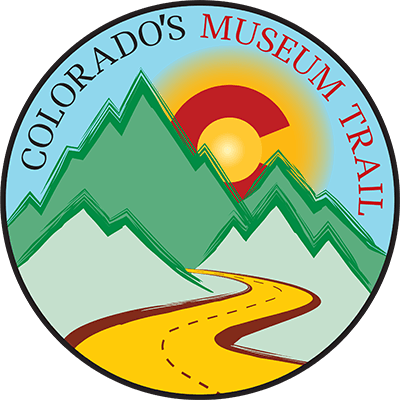Ring of Gold
In the rugged mountains ringing the San Luis Valley visitors may trace the steps of early prospectors and other fortune seekers who were lured to the region by promises of gold, silver, turquoise, and other metals. Although the bustling mining camps of the late 19th century have faded, the Valley’s frontier spirit lingers. Downtown districts, railroads, mines, and landscapes preserve the fascinating stories of the area’s rich mining history.
1 – Creede History Museum/Depot and Underground Mining Museum – The Creede History Museum, located in the historic railroad depot, features memorabilia on Creede’s boomtown heyday. The museum library houses a large collection of historic photos and documents. The Underground Mining Museum, located in a man-made cavern, has life-like exhibits that demonstrate historic silver mining techniques and mining equipment. Mining continued to spread further west over to Lake City. Between 1875 and 1892, Lake City served as a supply point and shipping hub for surrounding gold and silver mines. Lead and zinc mining became prominent after the crash in silver prices in 1893 and continued until about 1920. To learn more about mining in our neighboring town make sure to visit the Hinsdale County Museum. Creede Museum Hours: Summer Mon-Sat 10am-5pm | 719.658.2374 | Mining Museum Hours: Summer: daily 10am-4pm | 719.658.0811
2 – Bachelor Loop Tour – The 17-mile Bachelor Loop Tour takes visitors past historic mines and camps in the Creede Mining District. A four-wheel drive vehicle is not required, but the gravel road has some steep, narrow grades through West Willow Creek Canyon. Visitors should allow about an hour to drive the full loop, but may turn around at any of the 16 numbered sites.
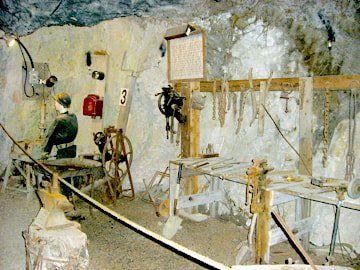
3 – Silver Thread Scenic and Historic Byway – Narrow footpaths that once carried nomadic groups through the San Juan Mountains eventually developed into toll roads, stage coach routes and today’s modern highways. One of the most beautiful is the Silver Thread Scenic Byway. On this 75-mile journey linking South Fork, Creede, and Lake City to US 50 west of Gunnison, travelers will experience southern Colorado’s rich history, wildlife, and spectacular Rocky Mountain scenery, including North Clear Creek Falls, one of Colorado’s Seven Natural Wonders. Another historic route traversed Stoney Pass to link the mining camps of Baker’s Park (now Silverton) with the railhead at Alamosa by way of Creede and the Upper Rio Grande Valley. Stage coach passengers, mail sacks, and ore wagons bounced over this desolate, high country road. The rugged road over Stoney Pass is suitable for OHV and 4-wheel drive vehicles only.
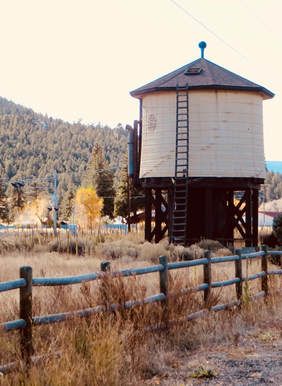
4 – Denver & Rio Grande Railroad Water Tank – At its height in about 1890, the Denver and Rio Grande Railroad (D & RG) had the largest operating narrow gauge railroad network in North America, linking Denver with Santa Fe and other distant cities. This railroad was a major carrier for coal and other minerals. A historic water tank that served the railroad still stands north of US 160 in the town of South Fork . This tank was part of a spur line that extended to the mining town of Creede.
5 – San Juan Driving Tour (over Stunner Pass) – The San Juan Driving Tour takes today’s visitor along U.S. Forest Service roads within the Conejos Mountains. The historic gold mining camps along this route (Jasper, Stunner, Platoro and Summitville) speak of an era when thousands of prospectors rushed to the Valley to seek fortune and fame in the “Silvery San Juans” and a few lucky men became millionaires overnight. Motorists may stop at Chinzell Flats where the array of blue columbine inspired Colorado’s state song, “Where the Columbines Grow”.
This side Driving Tour can be accessed from Del Norte or Antonito, CO.
To access this side route from the west side of Del Norte, take 14 Rd. south where it will become FR 330 and climbs up past Summitville where it joins FR 380. Take FR 380 to the left and follow it around Prospect Mt. and Lookout Mt. until it runs into FR 250. Taking FR 250 to the left leads down the Alamosa River into La Jara on X Rd (CO 15). Following FR 250 to the right leads to Stunner Pass and Platoro, and then down the Conejos River to Antonito on CO 17. From Del Norte to Antonito is about 72 miles. The roads are all 2-wheel drive roads and driving time is 2-4 hours. See the Rio Grande National Forest for more info.
6 – Rio Grande County Museum – The museum features a collection of stories and artifacts that illuminate the mining heritage of the region. Del Norte originated as a supply town for the mines of the Summitville District in the Conejos Mountains. The Summitville “Mother Lode” drew thousands to the San Juan Mountains and set the stage for the San Luis Valley’s homesteading rush.
Museum hours: Tuesday-Saturday 10 am-5 pm
(719) 657-2847 or
(800)233-4403
7 – Bonanza – Bonanza sits nestled at the base of the southern Sawatch Mountains. Founded in 1880 as a thriving mining camp, it is now the smallest incorporated town in Colorado, with a population of just 16. During the mining boom, Ulysses S. Grant held stock in Bonanza mines. Visitors to Bonanza may explore its historic cemeteries and take in the views of the aspen covered peaks named for the Ute tribal leaders, Chipeta and Ouray. Signage in the town and a U.S. Forest Service brochure interprets this historic mining district.
8 - The Crestone Historical Museum - Exhibits highlight the implements and tools used by the miners and farmers in the late 1800s and early 1900s. During the gold rush era (1874-1904) a string of mining camps sprang up along the Sangre de Cristo Mountains, serving the mines of the El Dorado and Crestone Mining Districts. Crestone was founded in 1880 and thrived; the other towns and mining camps were abandoned as the mines played out and little traces of them remain today. 719-256-4313 | Hours: Spring: Apr 30 - Jun 1st, Thur & Sat 11:00-4:00 | Summer: Jun 1 - Sept 30, Tues-Sun - 10:00-5:00
9 – Orient Mine – From the early 1890’s until its closing in 1932, the Orient Mine was the only iron mine in Colorado. In 1881 the Denver & Rio Grande Railroad built tracks to the mine. At its height over 200 tons of ore were shipped to smelters in Pueblo and Durango each day! The mine used an underhand stopping method to remove ore which caused an 1893 cave in. The bodies of six men were recovered, but the actual number of miners who died and were left buried remains one of the Valley’s mysteries. Along with Valley View Hot Springs, the Orient Mine is protected by the Orient Land Trust.
For information and tours, call
(719) 256-4315.
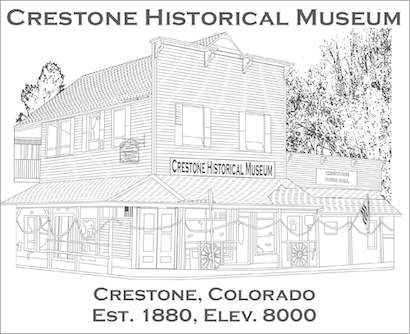
10 – Great Sand Dunes National Park and Preserve – The park’s visitor center features an exhibit that interprets the placer mining that occurred in the Sangre de Cristo Mountains. Spanish prospectors used arrastras, stone wheels, to crush rocks and release ores from mineral veins located in the Sangre de Cristo Mountains north and south of the Sand Dunes. Hours: Year-round 24/7 | 719.378.6399 |
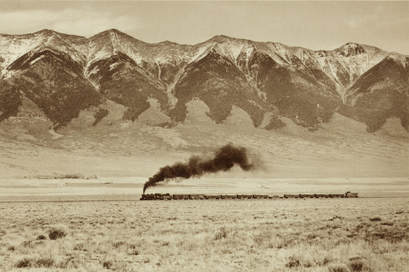
11 – Denver & Rio Grande Railroad Locomotive #169 — At the time of its construction in 1883, No. 169 was one of the fastest narrow-gauge engines built. The engine operated for 50 years and traversed rails that linked Alamosa with mining centers such as Crestone, Bonanza, Orient, and Creede. The engine now rests at Cole Park in Alamosa as a reminder of the steam engine’s glory days.
To learn more about the world of Geology, mining, fossils, about the Valley and the world make sure to visit the Ryan Geological Museum at Adams State University.
12 – Cumbres & Toltec Scenic Railroad, Depot – The Cumbres and Toltec Scenic Railroad was constructed in 1880 as part of the Rio Grande San Juan Extension. This narrow-gauge line served the silver mining district of the San Juan Mountains. While other lines were converted to standard gauge, the San Juan Extension persisted as a narrow-gauge railroad. Eventually the most scenic section was preserved and converted to passenger travel. Located at an important rail connection, the 1882 depot stands to this day just east of Main Street in Antonito.
Passenger trains, located in the new depot at the edge of town, operate from Memorial Day Weekend to mid-October departing Antonito daily. Antonito daily. Call
1-888-CUMBRES (1-888-286-2737) for ticket reservations and fares.
